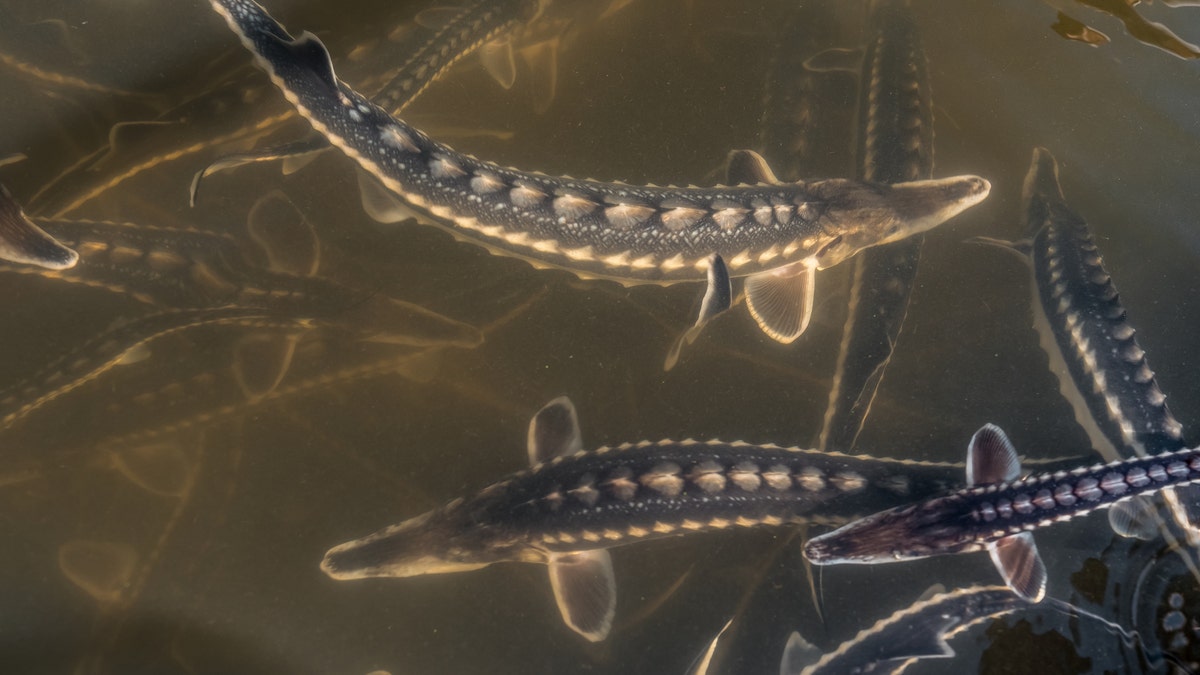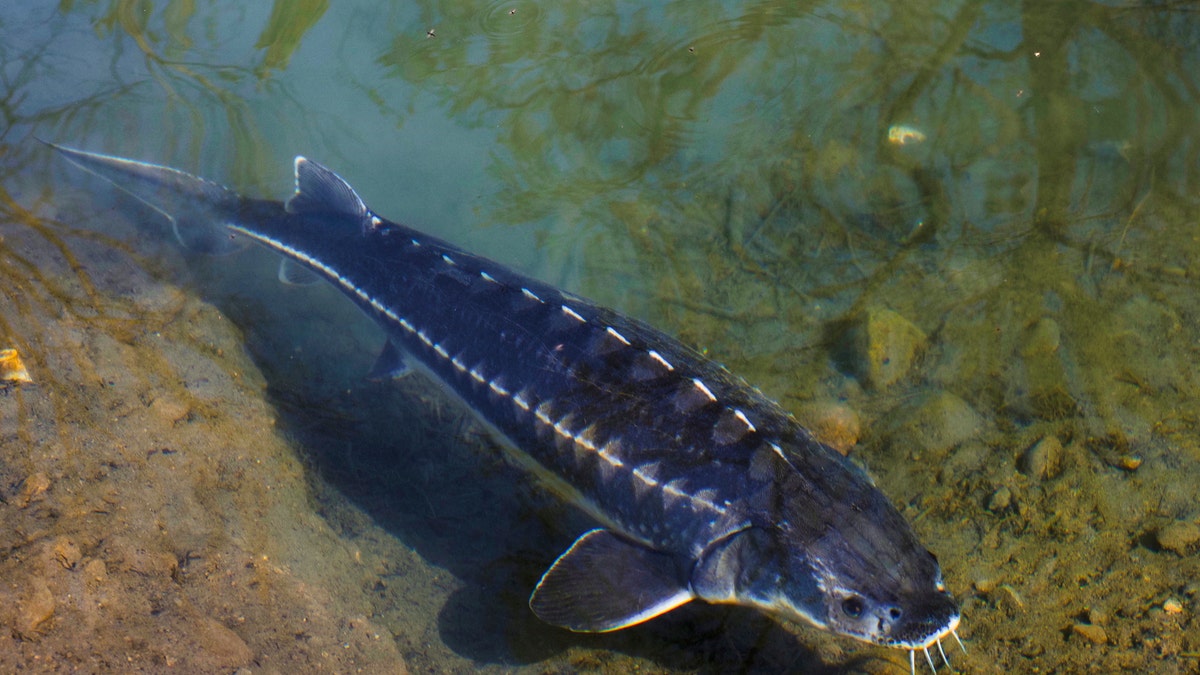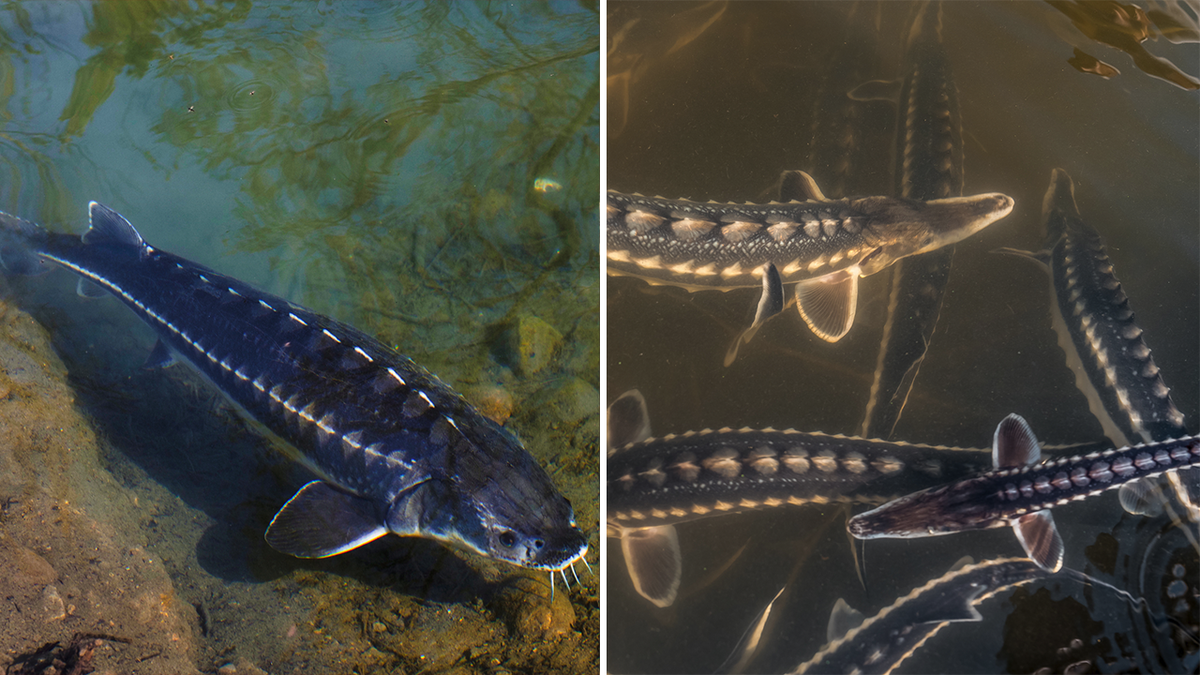Fox News Flash top headlines for September 6
Fox News Flash top headlines are here. Check out what's clicking on Foxnews.com.
Researchers at the Connecticut River Conservancy (CRC) led an ongoing investigation by sampling the waters of the Connecticut River across Massachusetts, Vermont and New Hampshire.
For the first time ever, they discovered evidence of shortnose sturgeons in the river by detecting the endangered fish with environmental DNA (eDNA), according to the CRC's press release.
James Garner, a PhD Candidate at UMass Amherst, told Fox News Digital via email that the investigation was prompted by hearing from the local "fisherfolk community" members sharing sightings of the prehistoric fish.
MICHIGAN OFFICIALS REEL IN RECORD 125-POUND PREHISTORIC FISH STRETCHING 6-PLUS FEET LONG
"Our multiple positive environmental DNA detections now provide the first scientific evidence to back up these community members' reports - confirming the presence of shortnose sturgeon upstream of these dams," he said.

Researchers confirmed sightings of shortnose sturgeon fish in the Connecticut River by using eDNA. (iStock)
Shortnose sturgeon have "body armor" consisting of five rows of external, bony plates known as scutes, according to the National Oceanic and Atmospheric Administration (NOAA).
They can weigh up to 50 pounds and stretch 5 feet long.
"This collaboration highlights the invaluable role that local knowledge plays in guiding scientific inquiry and demonstrates how eDNA technology can help us monitor and protect endangered species," said Garner.
CLICK HERE TO SIGN UP FOR OUR LIFESTYLE NEWSLETTER
Shortnose sturgeon are known as "prehistoric" since the fish date back to the time of dinosaurs, according to the Florida Fish and Wildlife Conservation Commission.
The species are protected regardless of where they are found, making it illegal to possess shortnose sturgeon, according to the Massachusetts Department of Fish & Game.

Shortnose sturgeon are protected regardless of where they are found, making it illegal to possess the fish. (iStock)
Atlantic and shortnose sturgeon supported a "thriving and profitable fishery for caviar, smoked meat, and oil" in the mid-1800s, according to the NOAA.
Towards the end of the century, sturgeons were being over-exploited.
More than 7 million pounds of sturgeon were caught in 1890 with only 23,000 pounds of sturgeon caught 100 years later, according to NOAA.
For more Lifestyle articles, visit www.foxnews/lifestyle
"The presence of numerous dams on the mainstem, habitat degradation and commercial fishing have negatively impacted populations of this fish, as they have for many native migratory species," said the CRC's press release.

Researchers used shortnose sturgeon primers and probes developed by the University of Maine. (iStock)
The CRC worked in collaboration with many different organizations and researchers on the discovery.
CLICK HERE TO GET THE FOX NEWS APP
Researchers used shortnose sturgeon primers and probes developed by the University of Maine in this survey as part of their diadromous species eDNA toolkit supported by the NOAA.






















